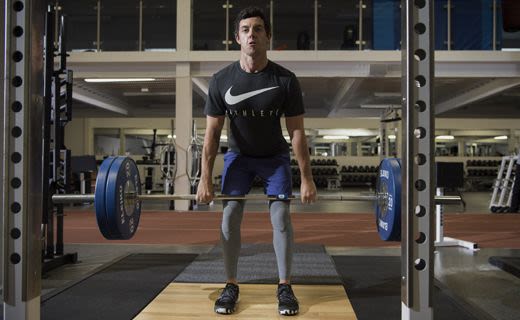Many people forget that golf is a physical sport that requires training and conditioning.
While the uninitiated think that golf is a game that requires little physical prowess, experienced players know better. When it comes to playing a round and doing it well, the game demands strength, endurance, and flexibility. A golf fitness workout is a must to accomplish these things.
A good golf workout plan involves a routine that is followed diligently off the green. So, if you want to drive the ball 300 yards, a fitness plan and some strength training can help.
In research for my website I was lucky enough to catch up with Nick Buchan, Owner/Head Coach of Stronger Golf. Nick is a Titleist Performance Institute (TPI) certified strength coach with a passion for getting golfers stronger and moving better. Through Stronger Golf he uses unique, research-based training methods to create stronger, faster, more athletic golfers. Golfers who are more coachable, achieve higher levels of skill mastery, play injury free, and for longer, because of improved physical fitness.
What I hadn’t considered as a low mid-handicapper is how my fitness and conditioning is holding back my progress, limiting my ability to hit longer drives, and increasing my chances of injury.
Nick explained that 80% of golf injuries are through overuse. The most common golf injuries are those involving the lower back and the upper limbs. Just think about the centrifugal force generated by your golf swing. This is really pulling the top and bottom parts of the body in different directions. Therefore, strength in your joints is critical in injury prevention.
Some tips for creating a fitness plan that can genuinely improve a game and your overall health include:
1. Don't underestimate the value of strength - While golf isn't necessarily a game of brute strength, muscle development does matter. The stronger a player is, and the better the form, the more distance they are likely to get on drives. To build up the strength it takes to lower one's score, make sure resistance and weight training are included in an overall golf exercise program. A player doesn't have to look like a bodybuilder to enjoy a good game, but stronger arm, back, and leg muscles can make a difference. So, don't overlook building these areas up when putting together your routine. Perhaps as a minimum some press ups or sit ups at home each morning will strengthen your core and upper body.
2. Endurance can help your game - There's nothing more frustrating than getting tired or achy on the back nine and then missing the putt on the 18th to win the match or shoot your best score. To avoid this, make sure endurance training goes into a golfing workout. Basic cardiovascular exercises can help a great deal on this end. You don’t have to run 10k every week, for some of you it will simply mean getting off the sofa in the evening and going for a walk, seriously, this will help.
3. Stretching is vital – Nothing can side-line a game faster than a pulled muscle. A fitness routine should include simple stretching exercises to avoid this issue. These exercises should include stretching the back, hamstrings, arms, neck, and so on. Would an athlete run a marathon or 100m sprint without warming up? Therefore, it's not a bad idea to add stretches as part of a pre-game routine to loosen up before walking up to the first tee.
4. Diet makes a difference - Diet is a part of fitness. Be mindful; it is essential to remember it as part of a golf fitness workout program. Generally, a well-balanced and healthy diet can make a difference in endurance and ability to play through. If extra weight is causing a problem on the course, dropping a few pounds can help. You might find that losing a few pounds or improving endurance will have benefits in other areas of your life as well.



